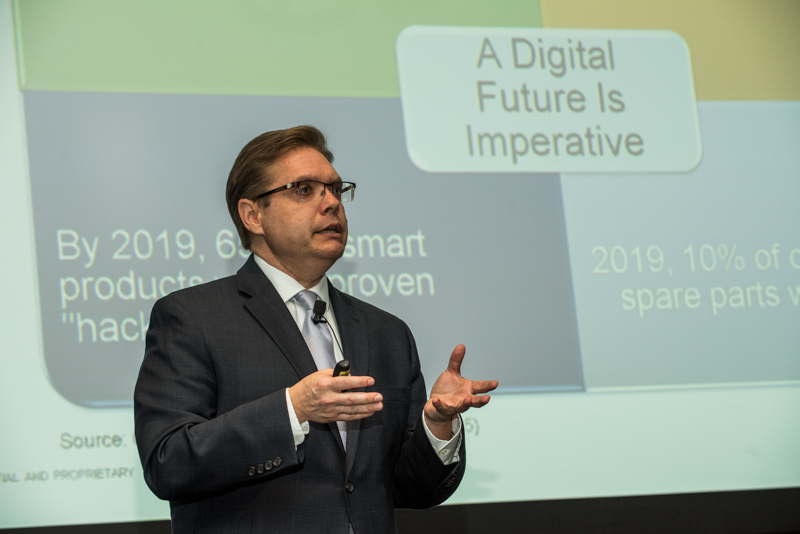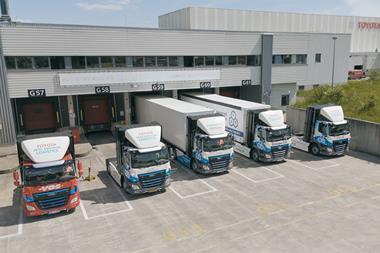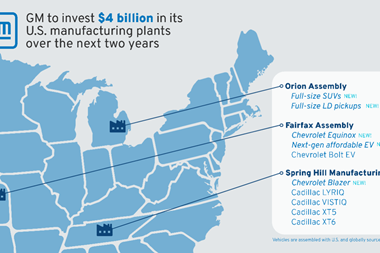 The Automotive Logistics Global conference offered examples of technological change, advantages and dangers. The question is whether manufacturers and logistics providers are investing enough attention and capital in keeping up with them.
The Automotive Logistics Global conference offered examples of technological change, advantages and dangers. The question is whether manufacturers and logistics providers are investing enough attention and capital in keeping up with them.
Rapid advances in digital technology are driving changes in the logistics processes that support the global automotive industry, from increases in automation to forecasting market changes or disruption in the supply chain. However, despite a fast pace of change, it is not altogether clear the extent to which digitalisation will impact or disrupt traditional automotive logistics, or how prepared for that manufacturers and providers currently are.
Speakers at the Automotive Logistics Global conference in Detroit were bullish about the prospects that new technology could offer manufacturers and logistics providers, in particular the potential for predictive analytics to be used to forecast and anticipate supply chain developments. Ford’s director for material planning and logistics in North America, Matthias Schulz, looked forward to a time when carmakers will be able to see changes to delivery times or capacity issues in advance, rather than always reacting to them. Mike Schober, general manager for service parts and accessories operations at Toyota Motor Sales, pointed to emerging business analytics tools, such as Tableau, which have made visualising and understanding data across logistics network more understandable and useable.
However, while logistics executives are starting to make forays into using analytics more strategically, some experts pointed to studies that suggest the sector is falling behind. Scott Dewicki (pictured above), leadership partner at business analyst Gartner Group, an IT and technology research firm, predicted that within the next two years 80% of organisations would find that their current descriptive analytics systems for managing parts and service will be inadequate.
Dewicki warned that automotive companies will have to embrace the potential that such analytics offers the supply chain, as well as to take steps to bring more input and stakeholders into such systems. For examples, he suggested that carmakers had to involve key suppliers and logistics providers in decision-making processes to help design the most efficient networks as well as to identify risks. He suggested that companies should abandon their scepticism in data-rich predictive analytics and stop resorting to “a human judgement that holds us back”.
“The sheer amount of data is now too much for humans to get their minds around,” he said. “We go forward and make the final decisions with values or prejudices. Digital business gets us out of that bias. The future is digital and we have to come to terms with that.”
For Dewicki, manufacturers and logistics providers should invest more in algorithms to identify key opportunities for customer value and improved performance within and across supply chain functions.
The conference did provide examples where carmakers have started to change their organisations and processes to involve suppliers more and integrate data early on. Both GM and Fiat Chrysler, for example, have recently reorganised their supply chain organisations to better coordinate sourcing, supplier, production and market data from across company divisions and the supply base. GM is also in the middle of a business transformation that will include new inbound and outbound logistics systems, according to Jim Bovenzi, executive director for global purchasing and supply chain in North America, and demand/supply globally.
However, it is far from certain whether companies have fully grasped the challenges and potential for digitalisation.
According to a survey by GT Nexus, a cloud-computing provider, while 75% of companies recognised the importance of the current digital transformation to their business, a third were dissatisfied with what they were doing and almost half were still using traditional communication methods one way or another. Guy Courtin, vice-president of industry and solution strategy, pointed to one major OEM that was still using fax machines to communicate with suppliers in China. Meanwhile, many major manufacturers at the event admitted that they were still heavily reliant on legacy systems and manual processes, including excel spreadsheets to compile and track data.
Knowing what we don’t know yet
Keeping up with changes to systems and processes may matter more than ever, and even be a question of survival for some companies. The average lifespan of a company is now 18 years compared to 61 in the late 1950s, according to Courtin, while more than half of the Fortune 500 firms that were in business in 2000 have since disappeared. Consumers, armed with latest handheld devices, are now asking for finer specifications on the cars they buy and are not prepared to wait for them. Courtin suggested that is and will continue to impact the automotive supply chain.
Although the potential for change is high, it is not yet clear the extent to which current processes will change or be automated. According to Senthil Virthachalam, strategy and transformation senior managing consultant at IBM, basic logistics needs are similar today to what they were ten years ago, with technology helping to achieve better results. For example, real-time visibility, better management of supply risks, increasing use of third party logistics providers to coordinate transport, storage and in-plant logistics – all of these are approached in new ways, said Virthachalam. Digital technology is also improving collaborative planning and supplier portals are improving visibility, as well as the availability and movement of parts.
Other innovations are also pointing towards new levels of efficiency. Courtin noted that factories were adding intelligent functions to the factory, including smart glasses to help workers with picking and parts handling, or drones to monitor inventory in large warehouses or yards. IBM's Virthachalam pointed to the use of pallet sensors that could now tell you how many parts are in the box it is helping to store, helping to provide real-time information for ordering.
Dewicki predicted that the use of 3D printing could remove the need for traditional parts handling and storage in the aftermarket. The ability to download the information for a basic service part and print it at the service centre promises to change the delivery routes and warehouse or dealer storage capacity issues, he said.
However, while examples of such changes can already be found in the supply chain, the pace and scale in which the sector will use the technology is still very much in play. “We don't know what we don't know,” said Courtin.

“We are laying down the ground work and extracting information but we don't know what we are going to do with it in total,” he added. “We don't know what is coming down the road...we are only limited by our imagination.”
Along with imagination, however, security breaches and other data risks are factors. Dewicki pointed to cyber security as growing threat the more the supply chain and its data become connected. Courtin agreed, suggesting that supply chain providers would have to be more responsive to such risks.
Ultimately, however, manufacturers and logistics providers will have to adjust to these threats in the way that other sectors are currently doing. “If what happened at Target two or three years ago wasn't a wake up call I don't know what is,” said Dewicki, referencing the major hack at the discount retailer that affected the personal financial details of 40m card users.
However, he also pointed out that not so long ago nobody was banking online out of fear of data security. “You need to understand the vectors [in your supply chain] and design way of identifying and mitigating them,” he said.
For a full report from Automotive Logistics Global, click here



































